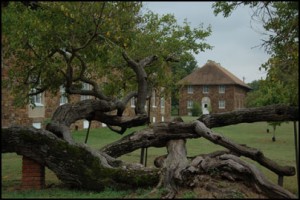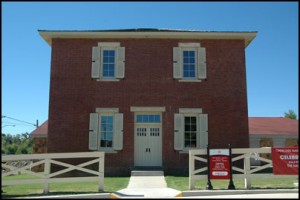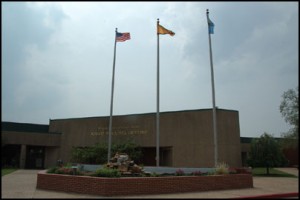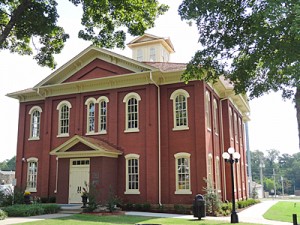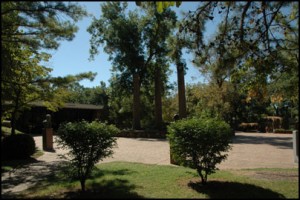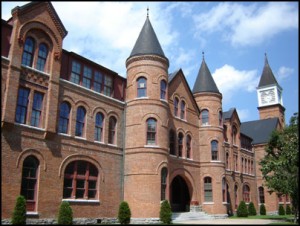In 1818, Tahlonteskee, Chief of the Western Cherokee, requested the establishment of a mission in the west, to serve the Old Settlers who moved west to Indian Territory prior to the Trail of Tears. Two years later, Dwight Mission, the first American mission to the Native Americans established west of the Mississippi River, opened near
Genealogy Queries for "oklahoma"
Cherokee Nation Supreme Court Building
The Cherokee Nation Supreme Court Building is the oldest public building in Indian Territory, present-day Oklahoma. It was constructed in 1844 to house the Cherokee Supreme Court. For several decades, cases were heard in this building and criminals were housed at the Cherokee Prison a block away. In 1870, the building became the new home
Cherokee Nation Headquarters
The Cherokee Nation Headquarters Complex sits on the south side of Tahlequah and houses the main offices for the Cherokee Nation government. In addition the grounds house the office for the Cherokee Phoenix newspaper. Within the Cherokee Nation Headquarters Complex is the “Cherokee FIRST” office. This office serves as an information center and customer service
Cherokee Nation Capitol Building
Following the devastating Trail of Tears, 1838-39, the Cherokee Nation was anxious to reestablish its government and worked tirelessly to that end. Tahlequah was established as the seat of government, and it was on this site that the Cherokee Council first met to reestablish the laws and government. On September 6, 1839, the Cherokee Nation
Cherokee Heritage Center
The Cherokee Heritage Center is a non-profit historical society and museum founded in 1962 to preserve the historical and cultural artifacts, language, and traditional crafts of the Cherokee. The Heritage Center is located on the site of the original Cherokee Female Seminary, which burned in 1887. Today three columns of that original building remain on
Cherokee Female Seminary
Just ten years after the Cherokee Nation was relocated to Indian Territory on the Trail of Tears, the Cherokee had made great strides in rebuilding the tribal infrastructure. In 1849, the Cherokee National Council turned their attention to education. The Council allocated the funding needed to build two non-denominational, secondary boarding schools – the Male
